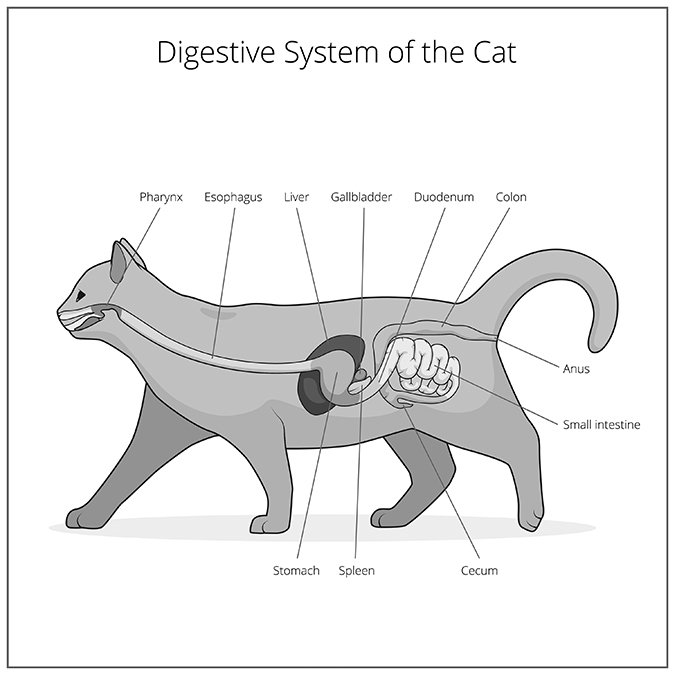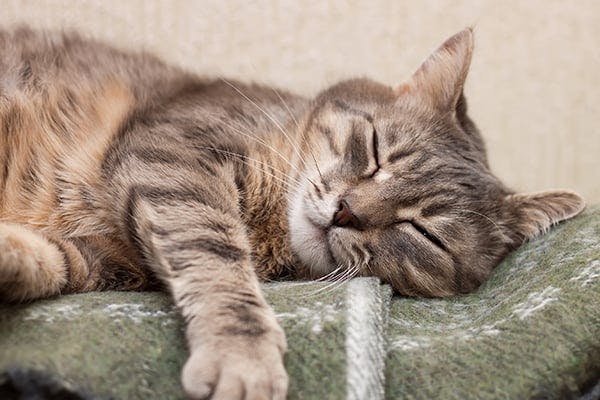
However many other can problems can result in liver failures such as heat stroke ingestion of harmful food or toxins fatty liver starvation tumors a portosystemic shunt and the use of Tylenol. Among the most common symptoms are loss of appetite and recurring nausea.

Untreated the disease has a mortality rate upwards of 90.
Feline liver failure stages. End stage liver failure may cause your cat to experience clotting disorders fluid in the abdomen severe jaundice and more. End stage liver failure either requires aggressive hospitalization to pull them out of crisis and offer them more time or a difficult decision regarding their quality of life. Life Expectancy Of A Cat With Liver Failure.
Liver failure in cats is a tricky. Cats often experience digestive upset when in end-stage liver failure. It may refuse to eat or vomit when it does eat.
You may notice that its feces and urine are discolored. The feces may be pale gray and the urine may be dark. Hepatobiliary death of the liver and bile ducts manifesting in jaundice.
Immune Hemic and Lymphatic causing clotting due to system imbalances. Nervous resulting in brain disease from the liver failure. Renal toxins injuring the kidney tubules.
In the early stages liver problems may be asymptomatic there may be no external clinical signs but as the liver disease advances to become a liver failure signs of illness become increasingly obvious. Loss of appetite not eating as much as normal or even anorexia not eating at all Polydipsia excessive drinking of water. Symptoms Of Liver Failure.
As and when toxins increase the liver is called upon to perform beyond its normal capacity which may lead to liver failure. Initially liver disease manifests as mild symptoms like. Pale gray and soft feces.
The symptoms of liver disease in dogs are almost similar to those of feline liver. Cat Liver Failure Symptoms Signs. Keep on reading to know some of these symptoms and signs you should look out for.
Decrease or loss of appetite. Sudden weight loss from anorexia. Jaundice yellowing of the skin gums inner ears whites of the eyes or mucous membranes.
Feline liver disease can progress to a stage where treatment may become cumbersome and in certain cases even impossible. It is advisable that positive steps be taken even on a mild suspicion of liver related symptoms. It is better to call your veterinarian to check as there are possibilities of cat owners misreading the symptoms.
After all it. Identifying Feline Liver Disease. The early signs of liver disease in cats can easily mimic the signs of other conditions.
Increased thirst and urination. When liver disease in cats is more longstanding or severe more specific signs can reveal themselves. When active liver tissue is swamped with fat the liver can no longer function and goes into liver failure.
When fatty liver disease hepatic lipidosis does happen the cat needs intensive care and force-feeding in order to switch off harvesting energy from fat and clean out the liver. Most human medications are toxic to cats. Signs that a cat has liver disease can vary and include loss of appetite vomiting stomach ulceration diarrhea fever blood clotting problems jaundice abdominal swelling excessive urination and thirst changes in liver size weight loss and occasionally gastrointestinal bleeding.
Symptoms of Acute Liver Failure in Cats. Acute liver failure affects several organ systems which include the gastrointestinal tract renal system the liver and gallbladder hepatobiliary system nervous system and the blood hematologic system. Because of the widespread effect symptoms can present throughout the entire body.
Initially liver failure is caused due to damaged or faulty liver results. When the livers condition goes worsen it can result in liver failure. However many other can problems can result in liver failures such as heat stroke ingestion of harmful food or toxins fatty liver starvation tumors a portosystemic shunt and the use of Tylenol.
Fatty Liver Disease also known as Feline Hepatic Lipidosis or Fatty Liver Syndrome is one of the most common liver diseases seen in cats. Its a complex type of feline liver failure that is still not fully understood. It can happen as a primary condition.
More commonly it tends to be secondary to some other primary condition. Hepatic lipidosis HL the most common acquired and potentially lethal feline liver disease is a multifactorial syndrome. In most cases a primary disease process causing anorexia sets the stage for HL in overconditioned cats.
Peripheral fat mobilization exceeding the hepatic capacity to either redistribute or use. Other possible signs of liver disorders include dark-colored urine pale gums or a build- up of fluid in the abdomen that could be mistaken for sudden weight gain. Your veterinarian can administer other tests to diagnose liver disease.
The signs of liver disease are not very specific making it difficult to recognize. Cats experiencing end-stage kidney failure are most likely to display severe symptoms. Among the most common symptoms are loss of appetite and recurring nausea.
Once kidney disease advances to stage four the disease has caused irreversible damage to your kittys health and the end may be near. Signs to watch out for. The end-stage of liver failure in cats The failure of the liver can be in the end-stage if the problem has been diagnosed when it is too severe.
This stage happens when the problem in the liver has increased to the point when body processes are drastically impacted. Damage from liver disease can accrue in several stages which increasingly affect your livers ability to function. Inflammation In this early stage your liver becomes enlarged or.
Prognosis for Liver Disease in Cats. The liver disease symptoms appear only when the disease is in a very advanced stage because the liver continues to function even when damaged. In some cases more than half of the liver is affected before symptoms manifest.
Mortality among cats suffering from liver disease varies from 15 to 40 percent depending on which type of liver. Liver disease in cats is fairly common but its difficult to treat. It can be caused by inflammation cancer infections or lipidosis.
Symptoms include jaundice lack of appetite orange urine decreased energy and more. Treatment is focused on supportive care and managing symptoms. Feline hepatic lipidosis shares similar symptoms to other problems including liver disease kidney failure feline leukemia Feline infectious peritonitis and some cancers.
Untreated the disease has a mortality rate upwards of 90. Hepatic failure or acute liver failure in cats is a condition characterized by the sudden loss of 70 percent or more of the livers function. This diseased state may be due to sudden massive liver tissue death.